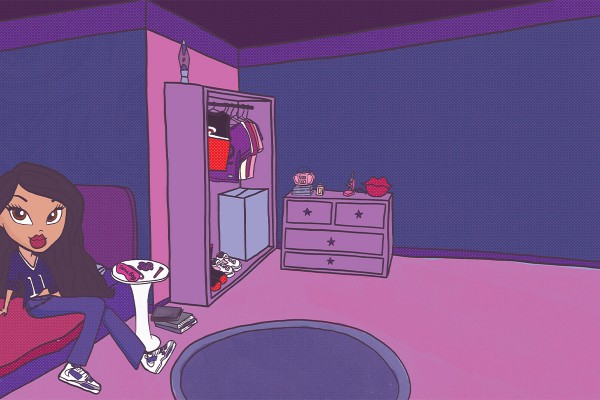Open my whakapapa and you won’t find a tidy capsule collection, but a wardrobe crowded with pieces that refuse a singular aesthetic. Among the Jordans, arab silks sit beside pounamu pieces; between the stacks of NFL jerseys, a hijab folds next to Māori-made designer. It’s messy and eclectic, but it’s mine. Growing up, my “closet” felt more like a rack on clearance – English was the only thing on constant rotation. Practical and ubiquitous, like the pair of jeans everyone has. Arabic was there too, like a rich fabric tucked at the back, but I didn’t yet know how to wear it. As for te reo Māori? It wasn’t even on the hanger – my cultural identity, folded away like a forgotten jacket.
Then came the audit. My tāua looked past the basics and said, “You’ve been sold short. This isn’t the whole collection.” She reached into the closet, pulled out whakapapa, and held it up like the statement piece it always was. Though her own reo Māori wasn’t pristine – a mix of Ngāi Tahu mita, general Māori, and English pieced together out of necessity – every word was reinforced stitching. It proved what I hadn’t yet realised: language wasn’t an accessory, it was the fabric itself.
Finding the Right Fit
My own journey towards te reo Māori was like a series of fittings. At first, words sat stiff and sentences hung loose. Like a pair of Doc Martens, the language was rigid and unyielding at first – uncomfortable even – but the more I wore it, the more it softened, shaping itself to me. High school gave me the first alterations, and university papers sharpened the cut. Now, at Te Wānanga o Aotearoa, the language feels like it’s been tailored for me – not perfect yet, but finally wearable in everyday life.
English may have been the off-the-rack staple, and Arabic remained the heirloom garment still waiting for its full fit, but te reo Māori was the bold piece that completes the outfit. For me, learning that tongue wasn’t an overnight glow-up; it was a solstice. A slow turning point when the long winter of silence gave way to light, and the closet finally opened. Every phrase I wear now feels like part of that cycle: return, renewal, the reminder that some fabrics don’t fade – they wait for the right season to shine again.
Fast Fashion vs. Forever Pieces
Here’s the thing: te reo Māori isn’t a knock-off. It’s not a fake brand you flex for clout, or a one-season drop that looks good for photos and falls apart in a week. It’s the original – the designer piece that sets the standard, the one everything else imitates but never matches. I still see how mainstream New Zealand often handles te reo Māori like a seasonal trend: token phrases sprinkled in an email here, bilingual signage rolled out for Te Wiki o Te Reo Māori, then tucked back into storage. Disposable. Forgettable.
In kaupapa Māori spaces, te reo Māori isn’t fast fashion – it’s couture. Handmade, custom-fitted, and built to last. The words my tāua passed down aren’t stitched for show; they’re meant to be worn until the seams soften, then be passed on to the next generation. A Pākehā framework will do just enough to look inclusive; a Māori worldview sees te reo Māori as the fabric itself. One fades after a season, while the other outlasts centuries.
Fashion is also about styling. You can let others dress you – squeeze into their rules, their silhouettes, their idea of what fits. Or you can do your own fit check, layer your pieces your way and walk out knowing the look is yours.
The Next Collection
That’s why I’m not just curating for myself. I’m designing for the ones coming after me. My tamariki will grow up with kōhanga and kura kaupapa as their everyday wardrobe – te reo Māori as their default jeans, and Arabic as their first pair of kicks – not a special-occasion outfit. And the best part? They won’t waste time rifling through closets wondering what belongs to them. They’ll inherit a full collection, ready to wear. The fits will be theirs from day one. This isn’t about keeping clothes pristine in storage. It’s about creating a lookbook for the future, with layers of whakapapa, textures of both worlds, and styles stitched across generations.
Strut It, Flaunt It
Whakapapa was never meant to sit in storage. So I’ll wear mine the way they were meant to be worn: unapologetically, every day, layered and loud. There’s no such thing as overdressing when it comes to your identity – only being bold enough to flaunt it, and not just for ourselves.
Mō tātou, ā, mō kā uri ā muri ake nei
For us, and those after us.



